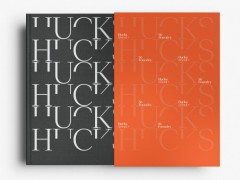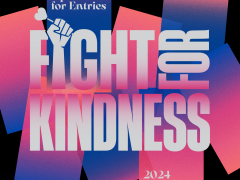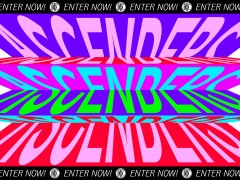How the revival of an ancient Greek inscription surpasses borders and cultural differences - The Pergamon Case
Onur F. Yazıcıgil is an Istanbul-based typographer and design educator, known for his meaningful and impactful research on typography and the historical and cultural intricacies of the Greek and Turkish scripts. Apart from being a renowned member of the academia and successful type designer, Onur has also co-founded ISType, an international conference that aims to create opportunities for established and emerging designers to share and develop their knowledge of typography, occurring biennially in Istanbul.
We had the opportunity to meet with Onur, talk about the future of typography and also his recent work "Pergamon: A Greek Script Typeface Design". This book is a thorough documentation of his journey in exploring Peragmon’s heritage, via typography, visual communication design, history, and archaeology. Pergamon was an ancient Greek city located in Asia Minor. It was a significant cultural center during the Hellenistic period and it is one of the cities that contain unique “inscriptions of honor” (tituli honorarii) carved on stone.
Onur’s research and Greek Typeface revival is an important body of work not only for type design but also for bridging the historical gap and emphasizing the commonalities between Greek and Turkish cultures. Projects like this contribute significantly to fostering a deeper understanding and strengthening the relationship between different cultures.
Typeroom: Hey Onur, how did you fall in love with typography? Can you tell us about your journey in the design world?
Onur F. Yazıcıgil: I vividly remember creating letterings to accompany my dinosaur drawings as early as when I was five or six. However, my official love for typography emerged during my undergraduate studies when I was studying Graphic Design at Bilkent University. Upon my graduation, I received a scholarship from Purdue University to pursue my MFA degree in Visual Communication Design in the US. At Purdue, I focused on the various qualities of type, all the way from designing type to animating type. Consequently, I researched the history of Sans Serif typefaces and designed a type family, which became part of my MFA thesis.
After I graduated from Purdue in 2009, I received an offer to teach at Sabancı University in Istanbul, where I still continue to do so after 15 years. During my first years as a young instructor (about 26 years old), I had the opportunity to spend a huge amount of time designing my second typeface called Duru Sans, which later was acquired by Google Fonts. Right after that, I co-founded ISType (Istanbul typography conference) in 2011.
TR: As a co-founder of ISType, what are some of the key insights and trends you've observed in typography over the years, especially within the context of Istanbul and the world in general too?
OFY: Having co-founded and later directed many ISType conferences, I gained valuable insights into the multicultural aspect of printed type. I particularly aimed to curate talks that represented a wide array of scripts beyond the Latin script. A good starting point was considering Turkey’s rare geographic location, situated among many neighboring countries that have their own scripts, such as Armenia, Bulgaria, Georgia, Greece, Iran, and Syria. Turkey, having used the Arabic script for eight centuries, switched to the Latin script in 1928, an event also known as the Turkish Script Reform. Istanbul was not only the capital of the Ottoman Empire but also the region's hub for printing and type-making activities, especially in the context of Arabic type-making. All of this historical knowledge further encouraged me to ensure that at ISType conferences, we cover a variety of scripts' typographic applications from various regions.
TR: Your project and book "Pergamon / A Greek Script Typeface Design" is a valuable source of knowledge and inspiration. How did the idea for this interdisciplinary project come about? Why did you choose Pergamon and the Greek alphabet as part of your research?
OFY: In the Fall of 2022, I was granted a one-year sabbatical from my university to conduct research and create new visual work. Just before my sabbatical began, I met with Melisa Sabancı, the founder of the Gate-27 artist residency program, during a faculty meeting at the program’s Istanbul location. It was then that I learned about Gate-27’s additional location in Ayvalık, which immediately sparked the idea of staying there for several weeks to study and analyze ancient inscriptions, given its proximity to Pergamon.
Additionally, I had always fantasized about reviving an old piece of lettering or type work. The challenge of transitioning from one medium to another intrigued me greatly. While I could have easily undertaken a mini project using historical inscriptions found in Istanbul, the prospect of working at a vast, intact site filled with similar specimens was far more enticing.
Upon learning about the residency program’s Ayvalık location, I promptly devised a proposal to stay there for four weeks, taking advantage of its incredibly beautiful and remote setting overlooking the island of Lesvos. I was already aware that Pergamon provided a rich epigraphic heritage displayed in the open air. Furthermore, the proximity of the residency program to Pergamon offered me the opportunity to select from a diverse range of epigraphic models.
TR: What were the main challenges you faced while documenting Pergamon's rich writing culture heritage? Was it difficult for you to work with the Greek alphabet?
OFY: The main challenge I faced was documenting each stone inscription at the same time of day, as the sunlight affected the appearance of the stroke modulation of the letterforms. Additionally, I had to sift through hundreds of photos each night to familiarize myself with the intricacies of Pergamon’s stone inscriptional styles. Ideally, I would have collaborated and worked alongside a professional epigraphist from Pergamon. However, this was not feasible as most of them were based in Germany and worked remotely.
Whenever I encountered a letterform that I couldn't decipher, I turned to my dear friend Paris Tsekouras for assistance. Being knowledgeable in ancient Greek, Paris guided me through some challenging aspects of my epigraphic analysis, particularly with unusual interpretations of certain letterforms such as Zeta, Xi, and Omega. While I was somewhat familiar with the modern shapes of the Greek alphabet, analyzing a 2000-year-old ancient Greek alphabet presented its own set of challenges. I frequently sought Paris's help, even in the middle of the night, whenever I made exciting discoveries, such as encountering another shape of Zeta, a letter rarely used in Pergamon.
Once I selected my letter models, I proceeded to design my first draft as a digital font. Subsequently, I received invaluable feedback from Irene Vlachou, who helped me address some width and optical issues present in my initial draft. While the letter shapes of my first draft were faithfully digitized, certain letterforms were either too wide or narrow, and Irene assisted me in optimizing these inconsistencies.
TR: It is fascinating that the world of type design gives us the opportunity to familiarize ourselves with different cultures and work with so many different languages. Do you believe that this process unites people and could be a proof that creation surpasses borders and differences?
OFY: Absolutely! What an eloquent way of pointing out this precious notion. When you meet an archeologist, paleographer, epigraphist, type designer, type historian or linguist it mesmerizes me to see how they beautifully go beyond the illusive idea of borders and nations. Type design, in particular, stands out as a profession that fosters a deep appreciation for letterforms and the diverse alphabets found across different cultures. It encourages us to view these alphabetical differences as a source of cultural richness that belongs to all of humanity. In embracing this perspective, we acknowledge the universal significance of written communication and the profound impact it has on shaping our understanding of the world.
TR: How do you approach the balance between historical accuracy and functionality when you design your typeface?
OFY: In creating the Pergamon typeface, my initial step involved faithfully digitizing the selected letter models. However, due to the handmade nature of these inscriptions, they exhibited variations in stroke modulations and shapes, lacking uniformity. These subtle differences required subsequent adjustment to achieve optical balance, a process commonly undertaken by type designers.
Initially, my approach was akin to that of a documentarist, meticulously digitizing each shape as observed. Later, I assumed my role as a type designer, focusing on optimizing the typeface to ensure a harmonious text density when set. This transition allowed me to refine the letterforms and enhance their coherence within the typeface, ultimately contributing to its overall aesthetic and readability.
TR: Can you highlight the most exciting and unique elements that came up during your research on the letterforms of Pergamon?
OFY: I absolutely fell in love with the size variations of Omicron inscribed on certain stones. Also, the stacked letters of Omega and Nu I found were not only aesthetically so beautiful but also typographically very functional. Oh! And these tiny elegant floral heart shapes I spotted in some monumental stones which enriched the whole experience of working at Pergamon.
TR: The typeface was also brought to the 3D space with the creation of some amazing jewelry by Emma Krafft jewelry studio. What other applications of the Pergamon typeface do you envision in modern design contexts?
OFY: I am incredibly fortunate to have a talented partner like Esin Nalbantoğlu, who is the creative force behind Emma Krafft jewelry studio. I admire her ability to draw inspiration from historical architectural facades when crafting new jewelry pieces. During a visit to Pergamon, she was captivated by the rustic beauty of the stonework, which served as the muse for her designs.
Esin incorporated the Pergamon letterforms that I designed into bracelets, infusing them with a sense of history and heritage. Additionally, she crafted necklaces featuring symbols she encountered during her time in Pergamon, further connecting her jewelry to the rich cultural landscape of the region.
In terms of contemporary design contexts, I envision Greek graphic designers embracing the Pergamon typeface in various applications, such as book covers, display signs, and even restaurant branding. It would be delightful to see the typeface utilized in a restaurant setting, where I could not only appreciate the aesthetic but also savor the delicious cuisine at the same time
TR: Why do you think this kind of work is important for contemporary type design? What other projects do you have lined up for the future?
OFY: Following the Pergamon project this past summer, I was invited to join the excavations of Perge (ΠΕΡΓΗ) in Antalya, which is run by the Classical Archaeology Department of Istanbul University. My task was to analyze and observe the aesthetic quality of the epigraphic findings of Perge. I spent three days at the excavation site, during which I took hundreds of photographs. Upon my return to Istanbul, I met with my graduate students Bartu Başaran and Ruslan Abasov, who also work with me on their thesis projects at Sabancı University. Independent of their thesis projects, I offered them the task of reviving Perge’s inscriptions, which they gladly accepted.
Perge presented a unique challenge compared to Pergamon, as it featured a significant number of Roman inscriptions alongside Greek ones. This provided each student with the opportunity to focus on reviving one script while maintaining aesthetic harmony between the two. Bartu chose Greek, and Ruslan chose Latin, and they successfully completed the first part of the project. I continue to supervise the project which should be finalized in the next few months. I continue to oversee their progress, and we anticipate finalizing the project in the coming months.
Tags/ typeface, type design, research, revival, greek script, pergamon
_page-0009.jpg)















_page-0012.jpg)
_page-0017.jpg)
_page-0018.jpg)
_page-0019.jpg)
_page-0022.jpg)
_page-0021.jpg)
_page-0024.jpg)
_page-0004.jpg)
_page-0034.jpg)
_page-0002.jpg)
_page-0001.jpg)


